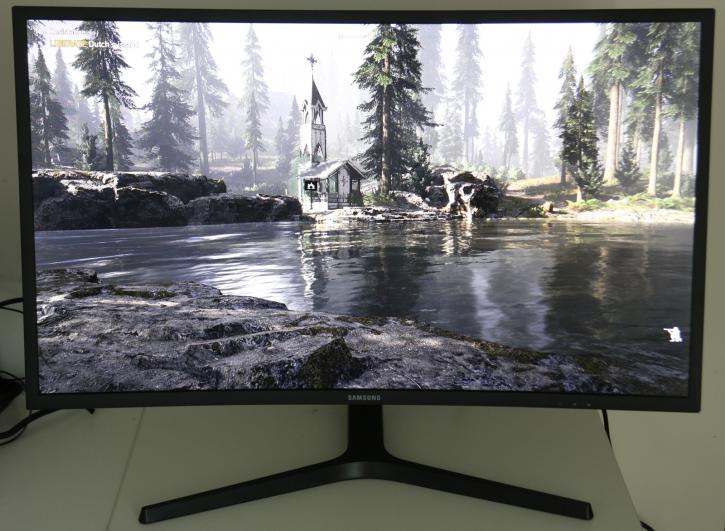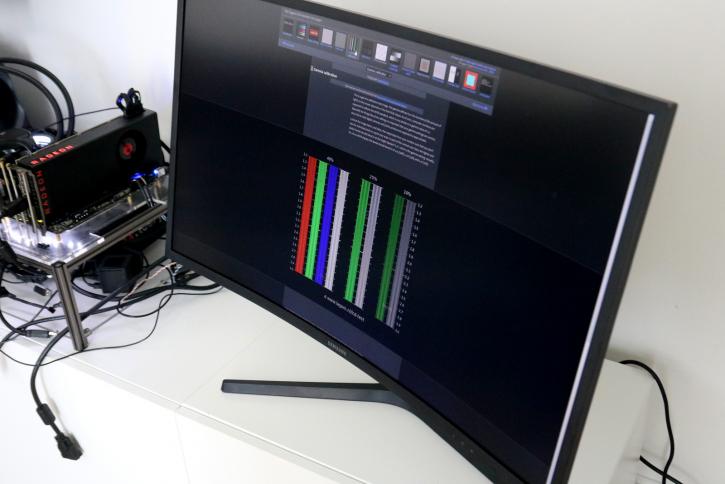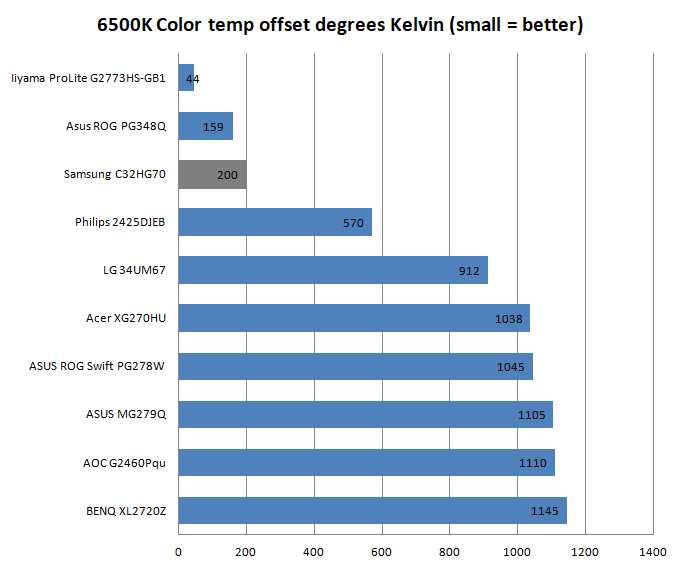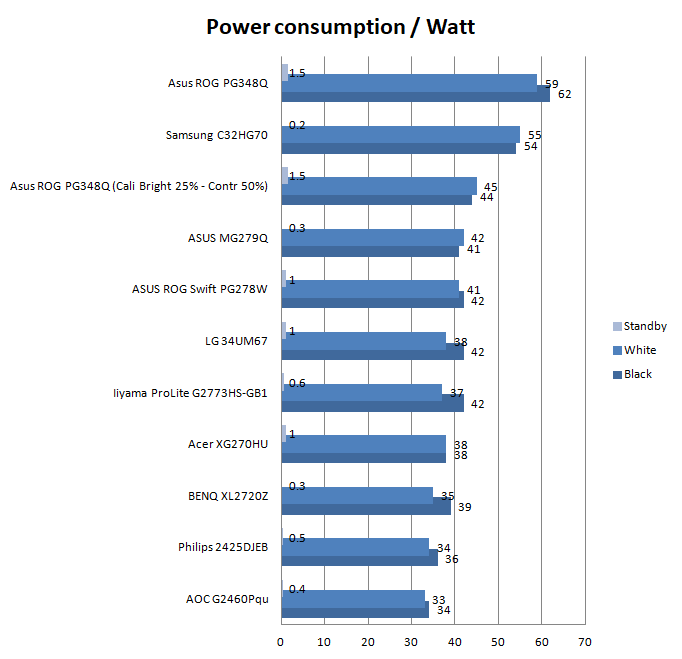Viewing Angle - Color Temperature Offset - Power Consumption
Viewing Angle & Color Temperature Offset
Monitors are often advertised as having a viewing angle of somewhere between 140 and 165 degrees. This means that you can still see what's on the display if you are looking at it at 70 to 83 degrees from the side. However, most of the time, you will be sitting roughly straight in front of the screen, which means that you are looking at 0 degrees to the center of the screen and, at most, 45 degrees to the sides. Compared to the advertised viewing angle, it is much more relevant that the display does not change brightness or color in the corners.
Above, a 0% view angle, we look directly at the screen. Below, the viewing angle at sharper horizontally positioned camera angles.
At an angle of almost 40 degrees here's where TN panels normally run into issues, IPS and VA are okay in this respect.
Photos absolutely blow to show the effect properly, when you look at brightness and discoloration alongside the viewing angle then that will tell you something about the image quality when you are not looking straight at the screen. TN screens would show discoloration to some degree whereas IPS and VA screens are less sensitive to that. Viewing angles for monitors are relative and a fairly subjective thing, as I assume you'll be sitting directly in front of your monitor.
Temperature offset to 6500K
We approach color precision in a simple to understand way and to explain the method, this test is simple. We look at how close the screen is to a color temperature of 6500 Kelvin based on a sRGB color space. This test is done at default monitor settings. The screen, however, has many presets you can choose from and some very specific RGB color control preferences. The sky is the limit. In the chart above, the lower the value is, the closer the screen is to 6500 Kelvin. Overall, good viewing angles, nice brightness, proper contrast, vivid, sharp and good colors after a hint of tweaking.
Power consumption
Above, a chart on power consumption measured in three ways. A white screen, a black screen and then in standby/power down mode. The screen nearly tops the list, however, remains a relatively power friendly monitor. In standby it uses 0.2 Watts and displaying either white or black consumes, give or take, 55 Watts. We measure at 100% brightness which is the maximum output and thus power consumption. Lowering your brightness level will also lower power consumption.







